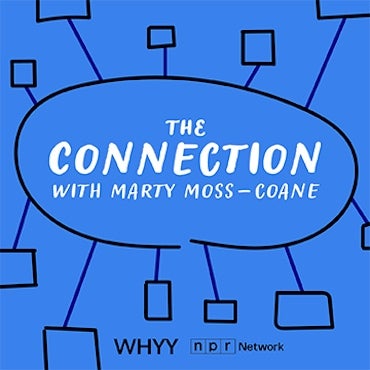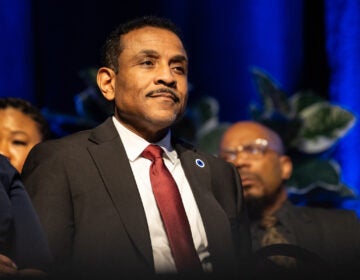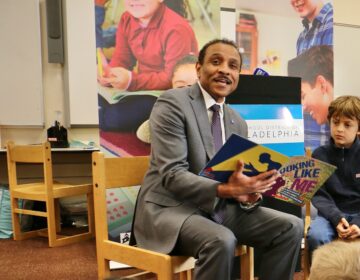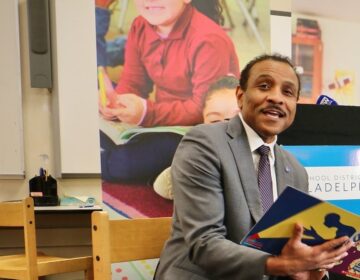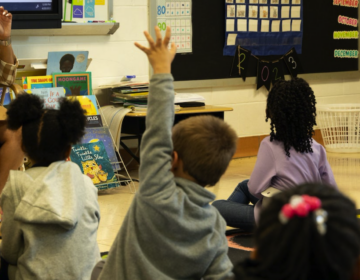Philly School District seeks long-term plan to address antiquated school buildings, mold, asbestos and lack of air conditioning
The average age of Philly public school buildings is 73 years old. School leaders are working on plans to improve the aging infrastructure.
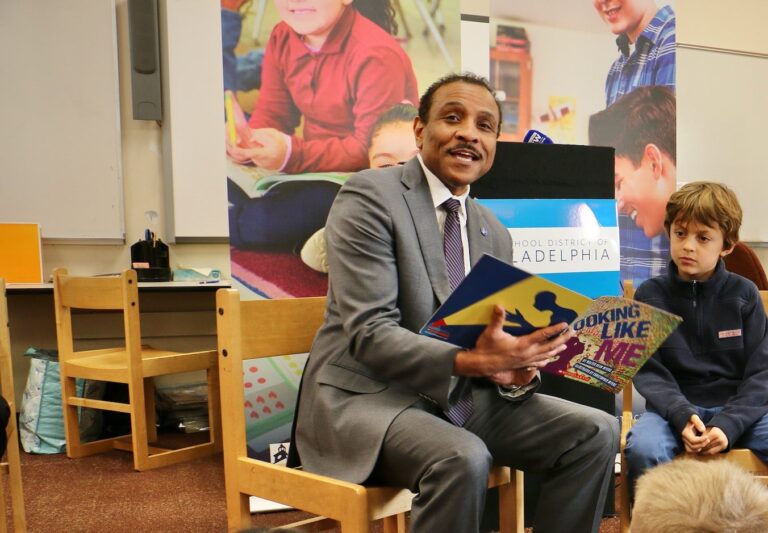
Philadelphia schools Superintendent Tony Watlington reads to a group of third graders at Fanny Coppin Elementary School. (Emma Lee/WHYY)
From Philly and the Pa. suburbs to South Jersey and Delaware, what would you like WHYY News to cover? Let us know!
Numerous public schools across Philadelphia contend with aging buildings and a shortage of basic amenities, including adequate air conditioning.
Some school buildings are either too spacious or too cramped for their current student populations, while others are burdened with environmental hazards, like asbestos or mold.
Schools Superintendent Tony Watlington, Sr. told WHYY News that the district is developing a long-term plan to fix the problems by the end of 2025. The plan will be submitted to the Board of Education for approval.
“The overall mission and strategy of the facilities plan is to do two things. One, to have a comprehensive plan to modernize our school facilities, which have an average age of 73 years; many are more than 120 years old,” Watlington said. “Number two, we want to more efficiently use our facilities because we’ve got a number of schools that are overenrolled and a number of schools that are under-enrolled. By addressing those issues, we can create the conditions for driving better student achievement.”
According to Watlington, the district aims to include a range of voices in its decision-making process. To achieve this, a team of advisors was created from civic and union leaders, community groups, educators, faith leaders, government officials, and parents.
Participants include Councilmember-at-Large Isaiah Thomas; Donna Cooper, executive director of Children First; Jannette Diaz, president of Congreso de Latinos Unidos; Kenzy Ahmed, student board representative; and Sulaiman Rahman, board chair of Mastery Charter Schools.
Watlington chose Oz Hill, interim deputy superintendent for operations, to lead the effort.
The school district has studied the last round of about 30 school closings in 2012, by then-Superintendent William Hite. Watlington said he is determined to not repeat the mistakes of the past.
For example, the closings were done too hastily, he said, as the district faced a $1.3 billion deficit at the time. It also resulted in disruptions that hurt student academic achievement. Also, the savings of about $24 million a year were not adequate.
This time, Watlington said, the school district is in better financial shape. Its credit rating is higher and the budget is solvent. The plan will keep academic performance, school attendance and the community, at the center of its efforts, he said.
According to Hill, the plan must ensure that the educational needs are met, along with the operational needs of the school communities.
The plan will focus on four options, Watlington said: placing more than one school on the same campus; rebuilding, refurbishing, or building brand new schools; repurposing some schools for community use; and closing some schools.
This year, the district opened two new state-of-the-art schools: The $62 million Lewis C.
Cassidy Academics Plus School in West Philadelphia and the $44 million Thomas M. Pierce School in North Philadelphia.
The school district’s capital budget for first year 2025 allocated $3.3 billion from fiscal year 2024 through fiscal year 2030. That includes $767 million for new construction and $544 million for major renovations.

Get daily updates from WHYY News!
WHYY is your source for fact-based, in-depth journalism and information. As a nonprofit organization, we rely on financial support from readers like you. Please give today.
